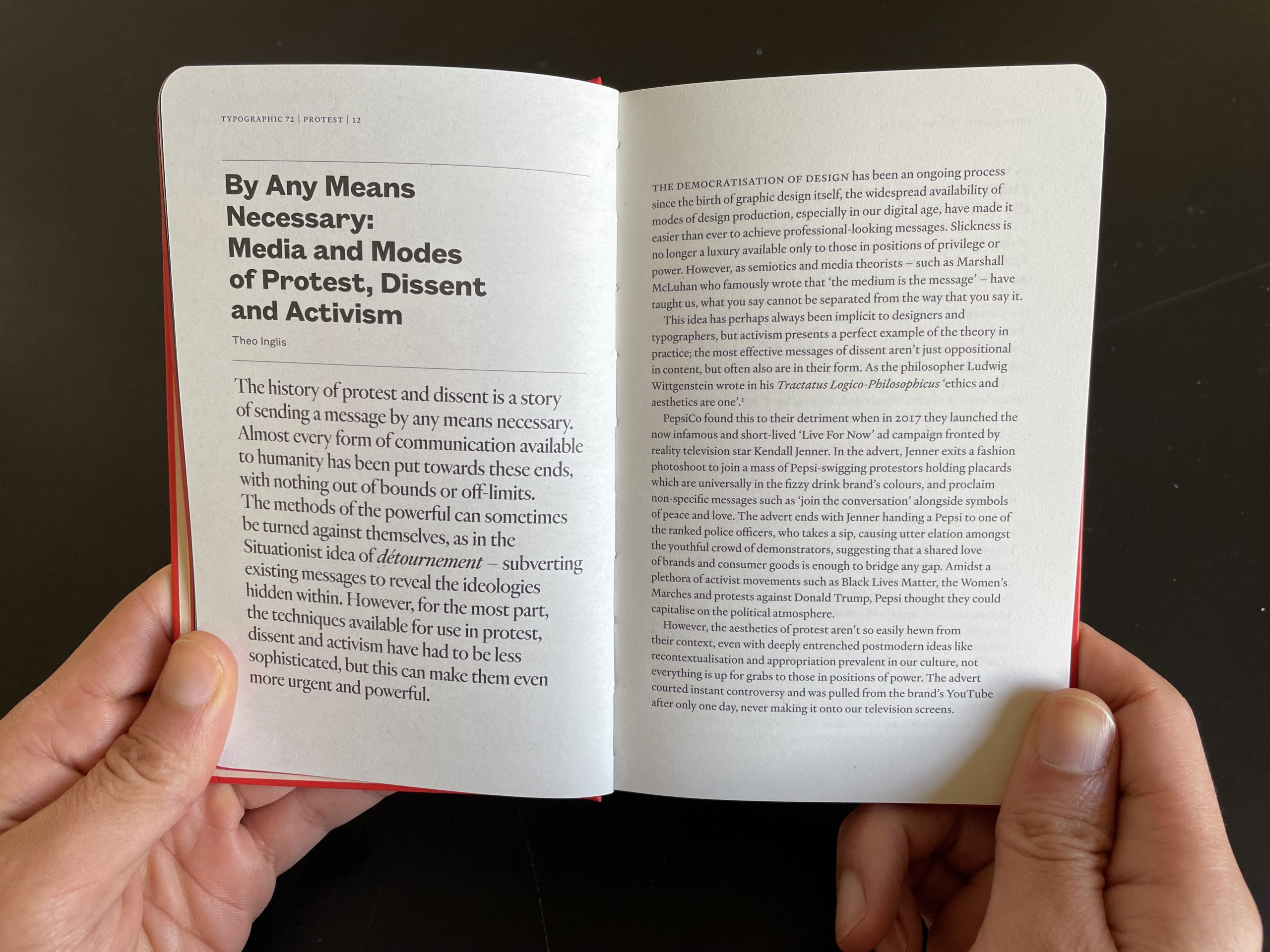
ISTD’s latest issue of Typographic, which I co-edit, is now out. The theme is protest and how type has always played a part in political dissent, activism and change. The new small scale format provides a neat context for an essay by design writer Theo Inglis.
Here is the editorial introduction to Typographic 72:
Ours is a quotidian art. Like pottery or breadmaking, typography serves a basic human need. In our case, to communicate and to call to action.
Today, the world is increasingly characterised by protest, dissent and activism. Multiple agendas are communicated and promoted by graphic means, whether in print, online or in the physical environment. Democracy, racism, justice and populism are simultaneously being advanced and challenged on all fronts.
Typographic 72 pauses to consider this phenomenon, to review how we got here and what part typographic design has played in it all. We asked design writer Theo Inglis to make sense of the debate and offer a contemporary perspective, which we are confident will stimulate interest and further thought.
We also invited ISTD Honorary Fellow Lucienne Roberts to give a designer’s personal view on the topic and how we might reset the goals in our practice of typographic design.